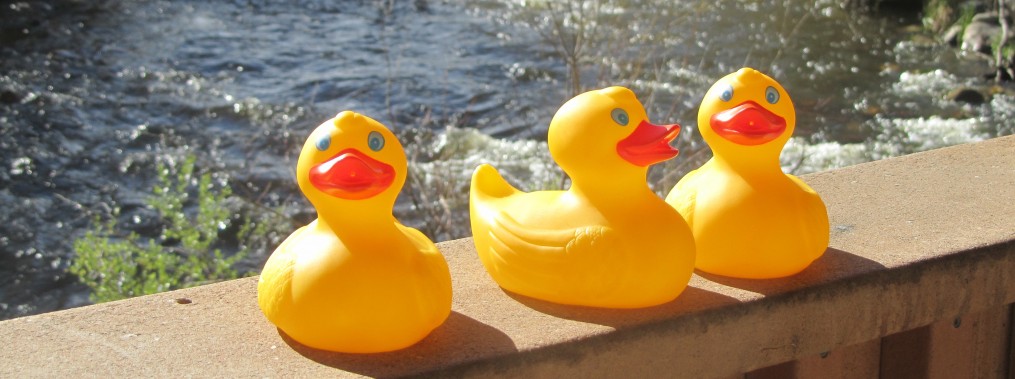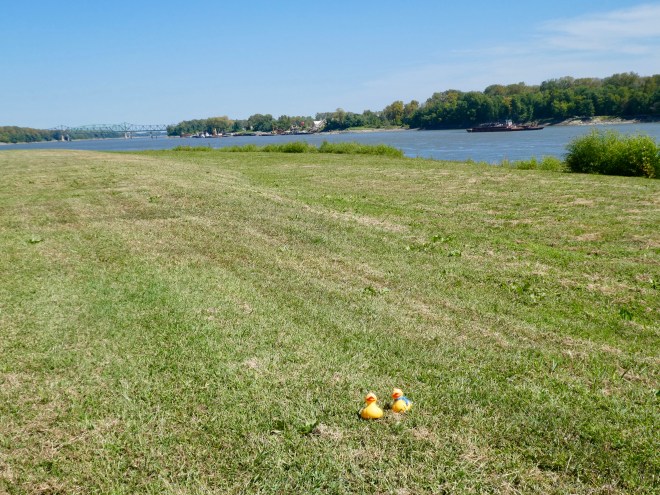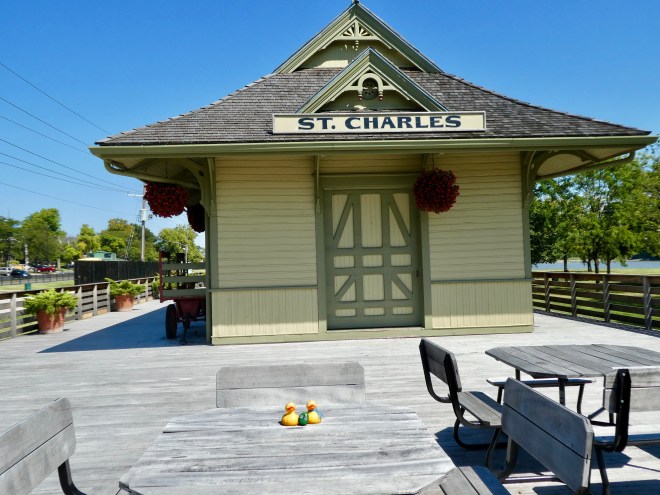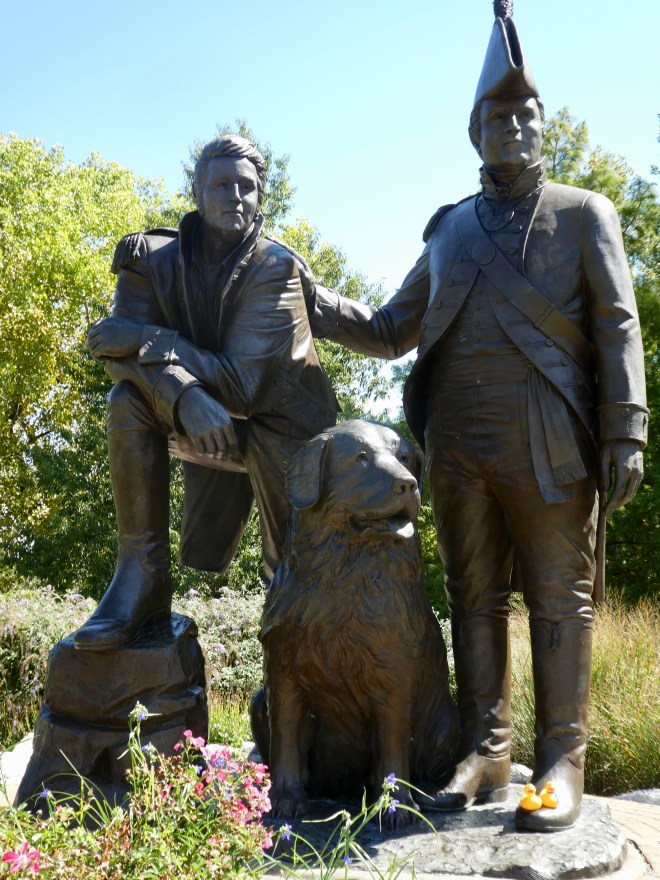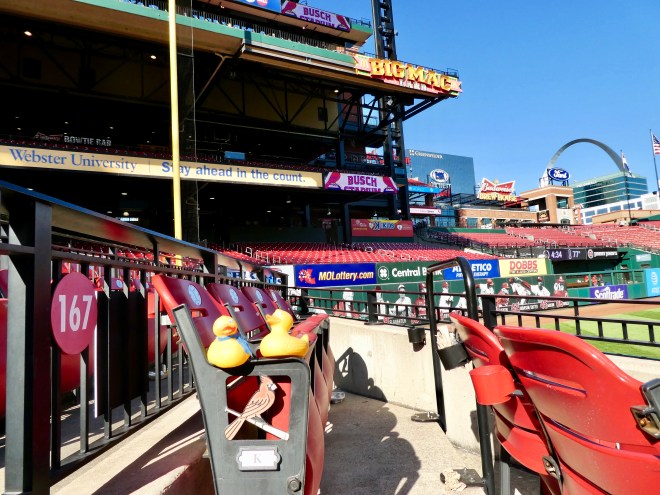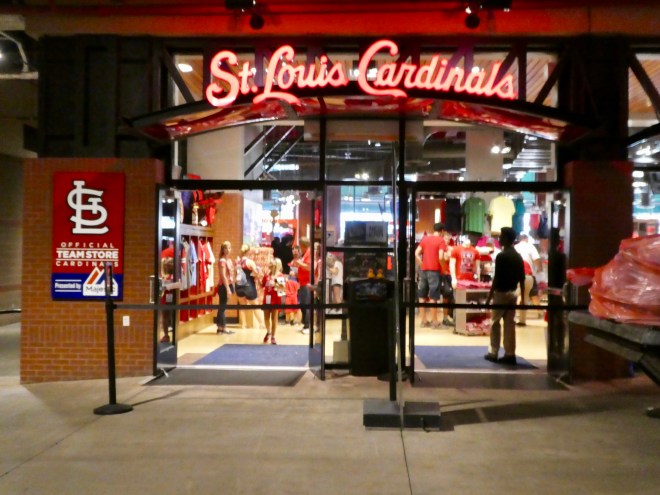Near Joplin, Missouri we stopped in Diamond, Missouri to visit the George Washington Carver National Monument.
George Washington was born a slave on January 1, 1864.
OK mom. Let’s go inside now, I’m getting off the bench. Inside this building we watched a short movie about his life and wandered through the museum. When George was very young, he and his mother were kidnapped. Moses Carver, the slave owner, got George back, but his mother was never heard from again.
What does George know or remember about this bleak time of his life? After learning about this episode of his young life, George began to realize that he was important and his life had worth. Moses Carter had given a $300 racehorse for his return. George was born in this house.
All that is remaining is a foundation and the frame of the house. As a young boy, George was fascinated with plants. He learned as much as he could, just by studying what he saw in the woods and asking a few questions. George became known as “the plant doctor.” He had a secret garden where people could leave sick plants and he usually was able to make the plants healthier. He also made plant house calls.
This is George Washington Carver at a young age. This statue is located by the bridge crossing this creek.
I, Zeb the Duck, love water and plants, so I insisted on being photographed here. More water.
Isn’t this a pretty lake? I love sitting on the bench and just watching the lake.
And here is lake company. These two turtles are enjoying the autumn sun. At the museum, we received a map of the grounds. Following the trail, we came to the Carver farm house.
I’m going inside. We entered through the back porch.
I, Zeb the Duck, met a new friend. This man, another tourist, entered the house and was very nice and friendly. My new friend was traveling from Oklahoma to North Carolina. Continuing on the path, we discovered the family cemetery.
The graves of Susan Carver and Moses Carver are here. Moses and Susan are the owners of this farm and also of the slave, George Washington Carver. The American Civil War has ended, so now all slaves are free, but George stays here and Susan teaches him to read. George is incredibly curious about everything and he loves to learn. Many schools still did not allow black students. George finally graduates from Minneapolis High School in Minneapolis, Kansas. After many disappointments and much racial prejudice, George becomes the first black student at Iowa State University and receives his Bachelor of Science Degree. George is a botanist and inventor. He teaches alternative crops to cotton so farmers can rotate the crops to prevent soil depletion. He works with peanuts, sweet potatoes, soybeans and pecans. Back near the museum, we see this bust of George Washington Carver.
He soon joined Booker T. Washington at the African American Tuskegee Institute in Tuskegee, Alabama. George Washington was an extremely important figure in agriculture and nutrition. He was an advisor to President Theodore Roosevelt, and also to Mahatma Gandhi of India. Carver taught farmers how to grow different crops and also invented hundreds of products from these new crops. Although he is remembered as a botanist, he was also a talented artist.
This painting by George Washington Carver is displayed in the museum. And he had more talents.
He loved music and was an accomplished musician. This is his violin. His monument is located the wooded area of southwest Missouri. Upon his death, January 5, 1943, Carver is buried in Tuskegee, Alabama near Booker T. Washington.
We hope you visit here soon. The Monument is very interesting and the wooded area is beautiful.
